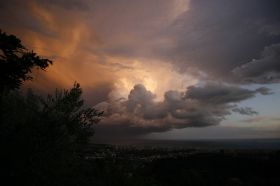According to the Intergovernmental Panel on Climate Change, temperatures are expected to rise between 2.5 and 10 degrees Fahrenheit over the next century. This warming is expected to contribute to rising sea levels and the melting of glaciers and permafrost, as well as other climate-related effects. Now, research from the University of Missouri suggests that even as rising carbon dioxide levels in the atmosphere drive the climate toward warmer temperatures, the weather will remain predictable.
“The jet stream changes character every 10 to 12 days, and we use this pattern to predict the weather,” said Anthony Lupo, professor of atmospheric science in MU’s School of Natural Resources, which is located in the College of Agriculture, Food and Natural Resources. “We were curious about how this would change in a world with higher carbon dioxide levels. We found that in that warmer world, the variability of the jet stream remained the same.”
Lupo and Andrew Jensen, who earned his doctorate at MU, used an existing climate model to simulate jet stream flow in the Northern Hemisphere. The simulation monitored a variable that responds to jet stream flow changes and can indicate global-scale weather instability. Researchers used this variable to determine when the jet stream altered its flow. Since meteorologists can only accurately predict weather within the 10 to 12 days between jet stream flow changes, a shift in this time frame would directly impact weather predictability.
Read more at University of Missouri-Columbia
Photo Credit: maralb56 via Pixabay


